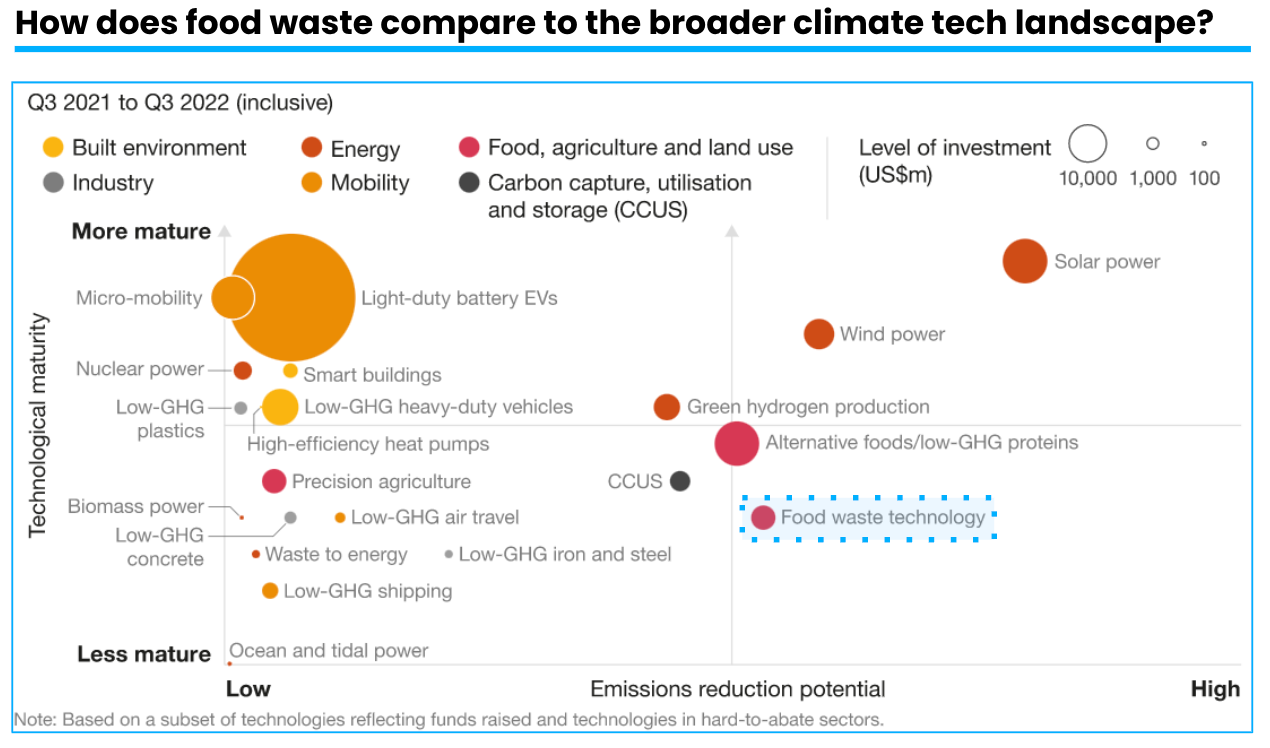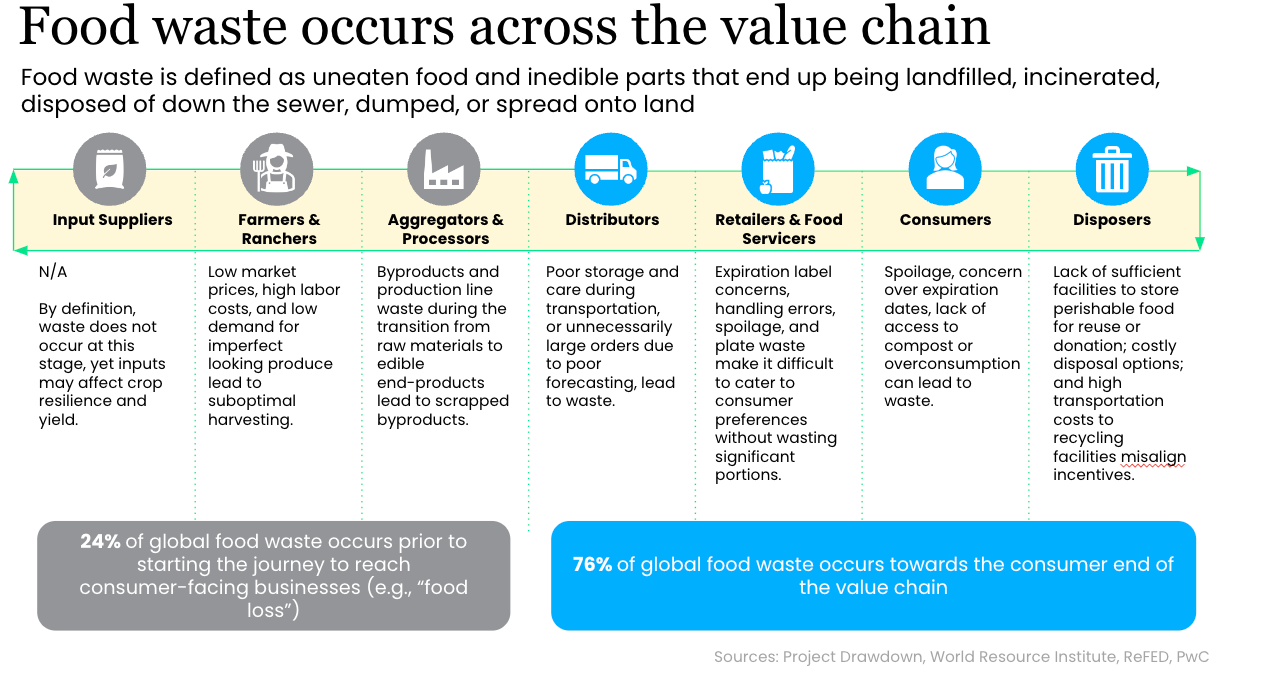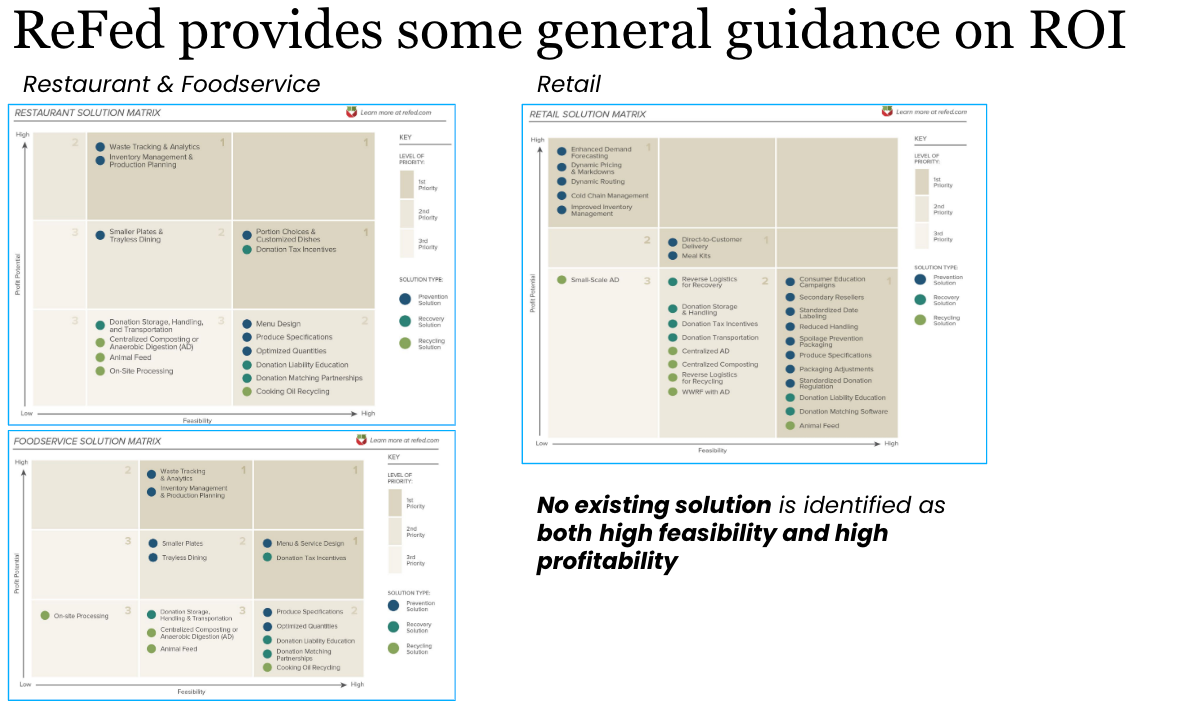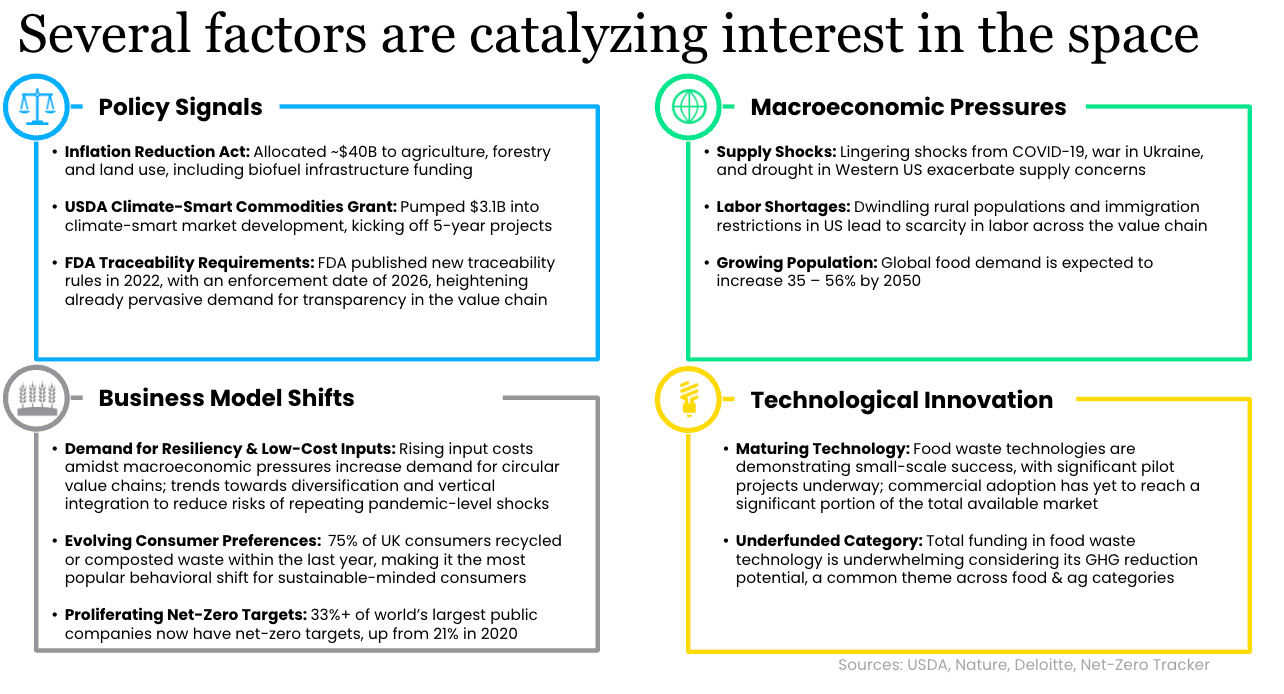Food waste is a colossal and complex problem, generating $940 billion in annual economic losses, contributing to 8% of global GHG emissions, and ranked #1 by Project Drawdown in climate solutions importance. While today’s addressable food waste market is massive (54.2M tons of food waste in the U.S. alone), and there’s a growing ecosystem of food waste startups, the market remains nascent, fragmented, and underfunded compared to other climate tech sectors.

We gathered interested investors, founders, and experts to explore questions vital to catalyzing greater funding and success in the category. From asking what role government policy should play to questioning the best part of the value chain for startups to sell into — our goal was to bring together a diverse audience set to unpack these questions.

Below are a few takeaways from this fruitful discussion:
1. Fragmentation of the value chain
Insufficient data visibility and information sharing across the supply chain mean that many food waste solutions tackling one part of the value chain are then passing the buck to another. Farmers further up in the value chain need access to demand data to foster better supply matching and retailer demand forecasting could one day also track shelf-life freshness for efficient restocking and inventory management.

2. Challenging consumer behavior
Consumers demand perfect produce from retailers, who therefore reject anything they don’t think they can sell. Additionally, consumers are incentivized to over-purchase and buy in bulk — which inevitably leads to waste. Tackling consumer behavior change in the home is tricky at best.
3. Misaligned incentives
Due to the complexity of the value chain, many startup solutions face a mismatch between the payer and the beneficiary. Solutions with both high feasibility and high profitability are scarce in the market, yet needed for investors to become excited.

4. Government can impose a cost on waste
Companies are forced to act if their core business is challenged. For example, if a company must pay to dispose of a waste stream or when a key input, such as water, becomes scarce and costly, it impacts the bottom line and/or the ability to produce. That pressure leads to change, and the government can help build stronger incentive structures to trigger this type of change across the value chain.
The time to advance innovations in food waste is now
Food prices are skyrocketing from inflation and putting pressure across the value chain, meanwhile, global food demand is expected to increase 35–56% by 2050, and 33%+ of the world’s largest public companies are committed to net-zero targets. Rising input costs amidst macroeconomic pressures are increasing demand for circular value chains to reduce the risks of repeating pandemic-level supply chain shocks. Novel food waste solutions can have a huge impact on the climate while also strengthening food supply chain resilience.

If you’re a food waste startup we’d love to meet you. Feel free to reach us at hello@valoventures.org
Thank you all for joining us and more to come in this category.
Onwards!
—
Thank you Pierce Gibson for your contributing research and charts used in this body of work.



